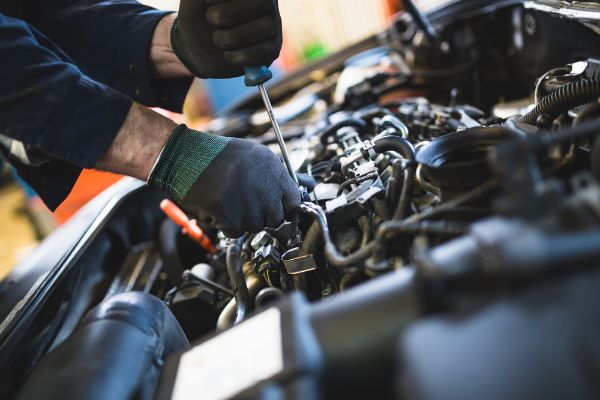A tune-up is basic engine service that helps your vehicle run right. During a tune-up, a technician checks parts like spark plugs, air filters, and fuel filters. Worn spark plugs can make your engine misfire. Dirty air filters block airflow. Bad fuel filters slow down fuel flow. These problems can lead to poor engine performance. Technicians also check engine belts, hoses, and ignition coils. They may test the battery and inspect the timing. A good tune-up keeps all engine systems working. It can help spot issues before they cause engine damage.
Signs Your Vehicle Needs a Tune-Up
There are signs your vehicle may need a tune-up. Your engine might feel rough when it runs. You may use more fuel than usual. Your engine may take longer to start. Your check engine light may come on. These are signs of engine trouble. Faulty spark plugs or clogged filters are common causes. Mechanics also check engine codes with diagnostic tools. They find issues you can’t see. A tune-up helps stop problems early. Waiting too long can turn a small fix into a big repair.
How Tune-Ups Protect the Engine
Tune-ups help keep your engine healthy. Clean spark plugs give better ignition. New filters keep dirt and debris out. A strong battery helps start the engine. Good coils and wires make your engine run smooth. Mechanics also check fluid levels and cooling systems. Overheating can damage engine parts. Belts and hoses are checked for cracks or leaks. If a belt breaks, your engine can stop running. Regular tune-ups lower the chance of breakdowns. They keep the engine strong for longer.
Why Every Vehicle Needs Regular Tune-Ups
All vehicles need regular tune-ups. It does not matter what you drive. Big or small, old or new, every engine needs care. A tune-up helps avoid costly repairs. It improves fuel mileage. It helps your vehicle pass emissions checks. It makes driving safer. A trusted repair shop knows how to check every part. Mechanics look at the full engine system. They use tools to spot problems before they grow. Keeping up with tune-ups is part of good vehicle maintenance. It is the key to engine life and safe driving.
Schedule Your Tune-Up with Bryant Automotive
Keeping up with tune-ups keeps your vehicle running smooth. At Bryant Automotive, our team checks every part with care. We look at spark plugs, filters, coils, and more. Our shop helps catch engine problems early. If your vehicle feels off or hasn’t had service in a while, it’s time to visit. Book your appointment today at Bryant Automotive and keep your engine strong.

